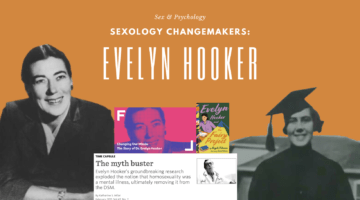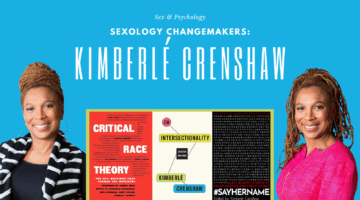The Ethics of Sexual Orientation Research: When Is Sexuality Too Risky To Study?
September 15, 2017 by Justin Lehmiller

A new paper accepted for publication in the Journal of Personality and Social Psychology suggesting that computers have better “gaydar” than humans made quite a media splash this week. Specifically, this study found that a machine algorithm correctly classified 81% of men and 74% of women as either gay or straight; by contrast, human judges correctly classified just 61% of men and 54% of women in terms of their sexual orientation.
These findings have raised a lot of ethical concerns, with many gay rights groups expressing worry about how such findings could potentially be used for nefarious purposes. For instance, anti-gay leaders could potentially employ such technology to target and ultimately attack sexual minorities. It is precisely this concern that led the HRC’s Director of Public Education to say in a statement that this research “leaves the world — and [in] this case, millions of people’s lives — worse and less safe than before.”
This research has repeatedly been characterized as “dangerous” and “unethical,” with the implication being that it never should have been conducted in the first place. While I certainly understand and share many of the concerns that have been raised about this paper, I think it’s worth stepping back and recognizing that the scientific study of sexual orientation more broadly is risky business. In fact, this is just one of many lines of research that poses a potential risk of harm to the LGBT+ community.
For example, what if researchers who study the origins of sexual orientation were to find a so-called “gay gene” some day? Well, it’s theoretically possible that some people might use this information in order to try and eradicate homosexuality, such as by modifying babies’ genetic traits before birth or selectively aborting fetuses that carry “gay genes.”
As another example, consider research into the phenomenon of sexual fluidity, which has revealed that some people’s patterns of sexual attraction, behavior, and identity change over the course of their lives. Some might interpret these findings as evidence that sexual orientation is not an immutable characteristic and, therefore, doesn’t deserve protection under the law. Indeed, some lawyers have actually made this exact argument in court in an attempt to deny rights to sexual minorities (see pages 11-12 of this legal brief for an example).
I could go on and on, but the point here is that a lot of research on sexual orientation has the potential to be used in ways that could harm the LGBT+ community. The question we therefore need to ask ourselves is whether those risks are offset by the potential gains in knowledge.
It’s important to remember that the scientific study of sexuality has been instrumental in the fight for LGBT+ rights and social acceptance. Case in point: research in this area has helped us to debunk numerous harmful myths and stereotypes about sexual minorities, such as the notion that sexuality is a matter of choice—it’s not. Those studying the origins of sexual orientation have found that sexuality likely has its roots in genes and biology.
Scientific research on sexual orientation (especially classic studies by Alfred Kinsey and Evelyn Hooker) also paved the way for homosexuality to be declassified as a mental illness in the 1970s—one of the most significant milestones in the gay rights movement.
More broadly, the accumulated body of research on sexual orientation has helped us all to better understand what it means to be human.
When studying sexual orientation, we therefore always need to be mindful of both the potential risks and benefits of conducting such work. There are always going to be risks, but the key consideration is whether the benefits are likely to outweigh those risks—and that’s the question we should really be asking ourselves about the new gaydar study. For example, if computers can indeed determine our sexuality from our appearance, does that tell us something important about the nature of sexual orientation? Does it add another piece to the puzzle in terms of supporting a biological explanation for same-sex attraction? If so, is that a big enough contribution to our knowledge to offset potential misuse of this technology?
With all of that said, we also need to be mindful of the implications of not studying sexual orientation whenever there’s a risk of danger (and, as we’ve seen, there often is). A lack of scientific research necessarily means a lack of knowledge—and it’s when we lack knowledge that harmful myths and stereotypes have the greatest ability to flourish.
Want to learn more about Sex and Psychology ? Click here for previous articles or follow the blog on Facebook (facebook.com/psychologyofsex), Twitter (@JustinLehmiller), or Reddit (reddit.com/r/psychologyofsex) to receive updates.
Image Source: 123RF/Juan Pablo Gonzalez
You Might Also Like:

Dr. Justin Lehmiller
Founder & Owner of Sex and PsychologyDr. Justin Lehmiller is a social psychologist and Research Fellow at The Kinsey Institute. He runs the Sex and Psychology blog and podcast and is author of the popular book Tell Me What You Want. Dr. Lehmiller is an award-winning educator, and a prolific researcher who has published more than 50 academic works.
Read full bio >

